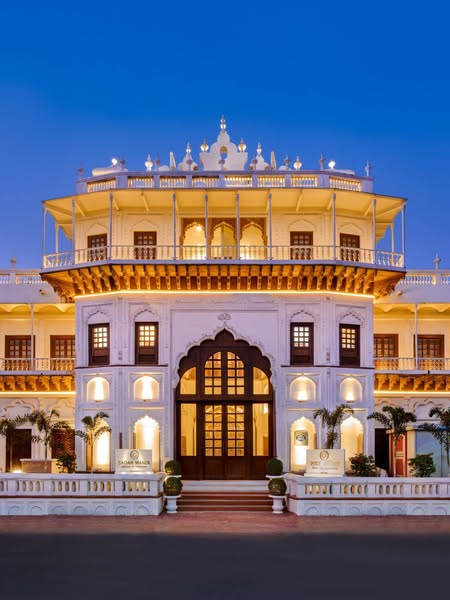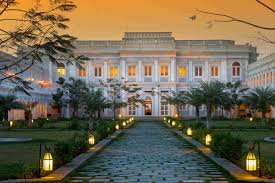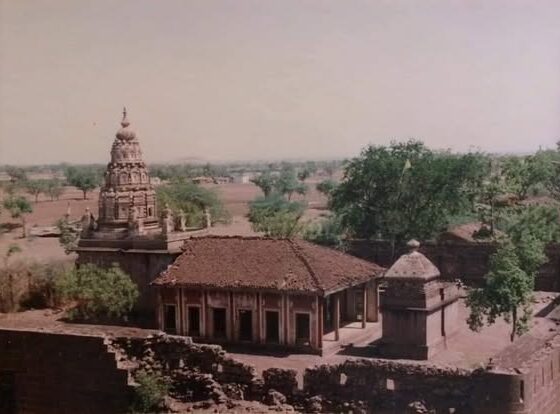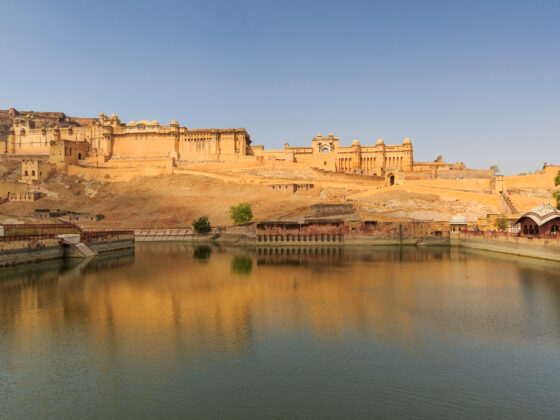Sadar Manzil, Bhopal: A Majestic Heritage of Nawabi Architecture

Introduction
Bhopal, the city of lakes, is renowned for its rich historical heritage and architectural wonders. Among its many historic gems, Sadar Manzil stands out as a testament to the grandeur of Bhopal’s Nawabi era. This magnificent structure, once the royal court of the Nawabs, is a fine example of Indo-Islamic architecture, characterized by its striking red-brick façade, intricately carved arches, and a regal ambiance that transports visitors back in time.
If you are a history buff or an architecture enthusiast, Sadar Manzil is a must-visit destination in Bhopal. In this guide, we will delve into its historical significance, architectural splendor, and visitor information to help you make the most of your trip.
The Historical Significance of Sadar Manzil
A Glimpse into Bhopal’s Nawabi Rule
Sadar Manzil served as the hall of public audience during the reign of the Nawabs of Bhopal. The Nawabs, known for their progressive governance and love for architecture, built numerous palaces, mosques, and administrative buildings in the city, with being one of the most prominent.
This historic edifice was primarily used for addressing public concerns, administrative meetings, and hosting dignitaries. It played a crucial role in the governance of Bhopal during the 18th and 19th centuries. The structure symbolizes the just and people-centric rule of the Nawabs, particularly under the leadership of Nawab Shah Jahan Begum and Nawab Sultan Jahan Begum, two of Bhopal’s most influential female rulers.
Transformation Over the Years
Over time, Sadar Manzil has undergone several restorations to preserve its architectural and historical integrity. Today, the building serves as the headquarters of the Bhopal Municipal Corporation, making it an active administrative center while retaining its historic charm.
Architectural Marvel of Sadar Manzil
Indo-Islamic and Mughal Influence
One of the most fascinating aspects of Sadar Manzil is its remarkable architecture. The structure reflects a perfect blend of Mughal, Rajput, and Islamic influences, showcasing the Nawabs’ inclination toward grandeur and artistic excellence.
Some of its key architectural highlights include:
- Red Brick Façade: The stunning red-brick construction gives the building a royal appearance, making it a striking landmark in Bhopal.
- Intricately Designed Arches: The high, scalloped arches add to the palace’s aesthetic appeal, reflecting traditional Islamic craftsmanship.
- Ornate Balconies and Jharokhas: Inspired by Rajput architecture, the balconies and jharokhas (overhanging enclosed balconies) provide a regal touch to the building.
- Central Courtyard with a Fountain: The beautifully designed courtyard, featuring a grand fountain, was once a relaxing retreat for the royals.
- Lush Gardens: Surrounding the palace are well-maintained gardens, enhancing the site’s visual appeal and offering a serene atmosphere for visitors.
Things to Do at Sadar Manzil
1. Explore the Architectural Beauty
Take a leisurely walk around the premises to admire the intricate carvings, majestic arches, and well-preserved interiors. The stunning contrast of red bricks against lush greenery makes for picturesque views.
2. Capture Stunning Photographs
Sadar Manzil provides an excellent backdrop for photography enthusiasts. Whether you’re capturing its detailed architectural designs or the tranquil surroundings, the site offers plenty of Instagram-worthy spots.
3. Learn About Bhopal’s Royal History
Reading about the history of the Nawabs before visiting can enrich your experience. Understanding the role of it in governance and administration offers deeper insight into Bhopal’s past.
4. Visit Nearby Attractions
After exploring Sadar Manzil, you can visit other historical landmarks in Bhopal, such as:
- Taj-ul-Masjid (one of the largest mosques in India)
- Shaukat Mahal (a fusion of Indo-French architecture)
- Gohar Mahal (a historic palace built by Bhopal’s first female ruler)
Best Time to Visit Sadar Manzil
Bhopal experiences extreme summers, so the best time to explore it is from October to March when the weather is pleasant. Early mornings and late afternoons are ideal for avoiding the midday heat and capturing the best photographs.
How to Reach Sadar Manzil
Sadar Manzil is centrally located in Bhopal and is easily accessible via multiple modes of transport:
- By Air: The nearest airport is Raja Bhoj Airport, located about 12 km from Sadar Manzil.
- By Train: Bhopal Junction Railway Station is approximately 3 km away.
- By Road: Public buses, auto-rickshaws, and taxis provide convenient access to the site.
If you’re driving, you can find parking spots near the municipal corporation office.
Entry Fee and Timings
- Entry Fee: Free for visitors
- Timings: 10:00 AM to 5:00 PM (Closed on Sundays and public holidays)
Since the building also functions as a municipal office, visitors should be mindful of working hours while exploring the site.
Why Visit Sadar Manzil?
Sadar Manzil is more than just a historical monument; it is a symbol of Bhopal’s cultural heritage and architectural brilliance. Whether you’re a traveler seeking historical insights, an architecture lover appreciating fine craftsmanship, or a photographer looking for scenic beauty, this place has something for everyone.
Visiting there allows you to step back in time and experience the royal elegance of the Nawabs while witnessing how the structure continues to serve the city even today.
Conclusion
Sadar Manzil, with its grand architecture and rich history, is a must-visit destination in Bhopal. It not only offers a glimpse into the Nawabi era but also stands as a testament to the city’s historical significance. Whether you are planning a historical tour or simply looking for a peaceful retreat, Sadar Manzil is sure to leave you mesmerized.
So, next time you’re in Bhopal, don’t miss the chance to explore this royal marvel!










